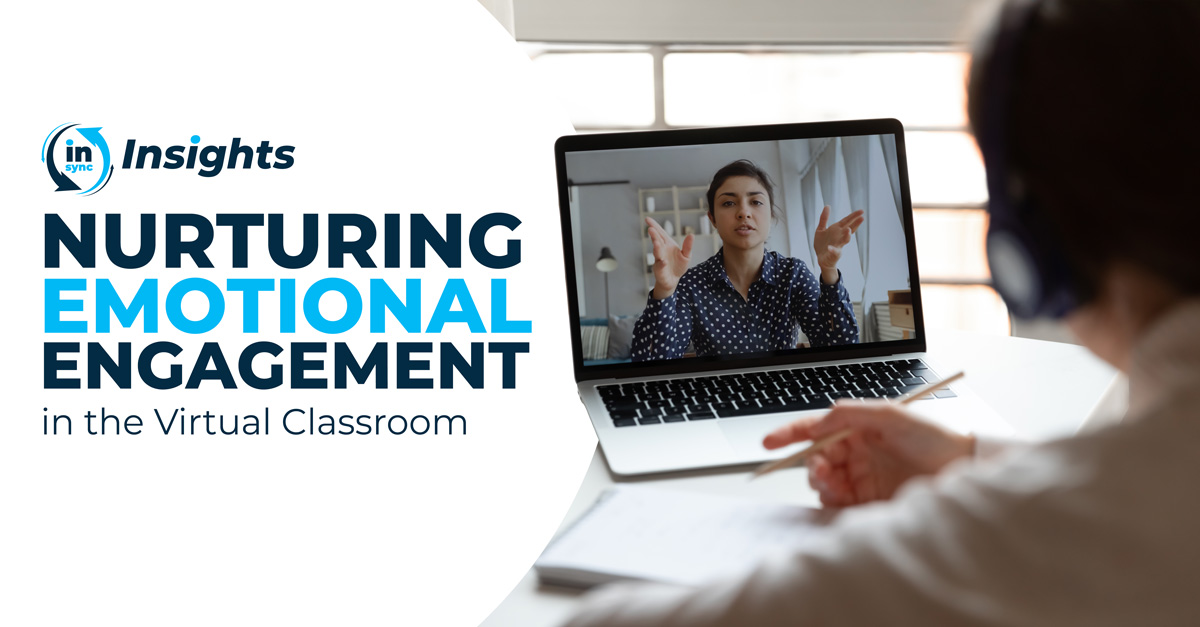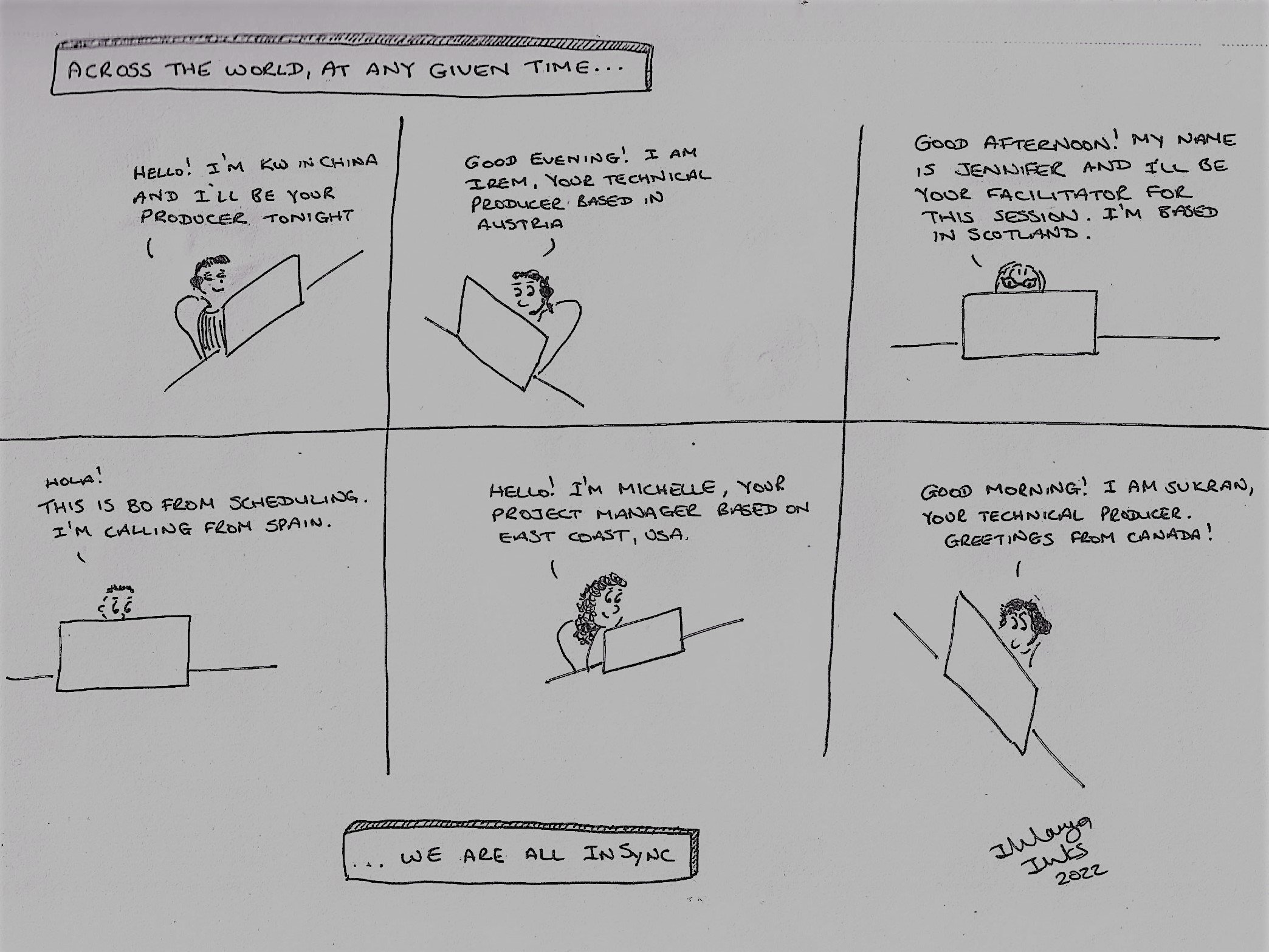It Was Almost Like Being in a Real Class! Making Virtual Learning Real
Jennifer Hofmann often states that the focus of virtual learning should be fundamentally on the learners, their experiences and their learning...
4 min read
 Jennifer Hofmann
:
Jun 2, 2020 7:00:00 AM
Jennifer Hofmann
:
Jun 2, 2020 7:00:00 AM

 What are the Long Term Effects?
What are the Long Term Effects?I remember January. Traditionally, January and February are the slowest months at InSync Training. Organizations tend to spend these early months finalizing the training plans for the rest of the year. As always, we wondered what this new year would bring.
Then in February, we started hearing about Covid-19. Aka #TheVirus.
March brought uncertainty to the market… Would we still travel to conferences? How long would we need to worry? Are our children safe in school? Organizations were in a reactive mode - rescheduling or canceling events for the next several months. Many of those events were automatically moved online with little thought to long-term redesign.
April brought the realization that we would have a largely work-at-home white-collar workforce for at least the next several months. With multiple individuals sharing ad hoc informal work spaces, often surrounded by children and extended family, so many adaptations needed to be made. April brought hours and hours and hours of videoconferencing, and a noticeable reduction in the amount of bandwidth available to support all of these events suddenly online.
May was a month of reluctant acceptance to what people are calling the “new normal.” Multinational organizations made decisions to keep the majority of their workforce at home through the end of 2020. And with these changes and decisions, we’ve observed (and lived) five new realities:
1. Increase in training activities. We see a dramatic increase in the amount of training activities taking place. So many organizations are looking at this time of reduced travel and uncertainty as an opportunity to provide professional development. For the short term at least, many people are getting more training than ever before.
Long-term impact: This increase in training hours will start to be reduced, as organizations find ways to adapt their business model to the current economy. But, it’s interesting to see such a strong interest in professional development. Is investing in people now a higher priority than before?
2. Large shift towards 7+ hour sessions. In 2018, InSync produced a total of 5 sessions that were 7 hours or longer. In 2019, that number rose to 29. And so far in 2020? We are closing in on 450 7+ hour days. Some of these are an attempt to simply replace an existing face-to-face schedule with the virtual schedule in order to minimize disruption to calendars and to maintain a sense of normalcy during the chaos.
Long-term impact: These long-term sessions are exhausting for everyone involved. We’ve long maintained that two hours is the optimal length for a virtual training initiative, though there are many examples of half-day sessions being very successful as well. Being confined to a desk in a home office for more than seven hours surrounded by family and other distractions doesn’t feel like a recipe for training success. However, I expect the rest of 2020 will continue to see these long days.
3. Collaborative workspaces are becoming recognized as viable learning spaces. An interesting trend is the increase in utilization of products like MS Teams and Google Meet being used as the virtual classroom space. Third-party applications like Beekast, Invision, and Mentimeter are being integrated into designs in an effort to customize collaboration. We are creating better experiences than ever before, but there is a steep learning curve on how to get this done.
Long-term impact: This trend will result in making the old lines between formal learning, informal learning, and workplace collaboration even more blurred. I’m pretty excited about it - why not use a common toolset for learning and for working? Cohorts of learners can remain connected after the formal learning is over, and resources provided during the training can be supplemented by individuals actually doing the work. This is the future of blended learning – as soon as we work out the details.
4. Video. I’ve been working “at home” for more than 20 years. Most of that time has been spent supporting virtual classrooms. I am confident in stating that I’ve been on video more in the last two months than I was in the 20 years leading up to the pandemic. Organizations want to maintain connections between their workers and, as a result, are insisting on video. Many individuals see that is an intrusion - video gives a glimpse into their at-home life; sometimes that’s more than we want to share with our coworkers and employers.
Long-term impact: People are starting to turn their cameras off. As long as we are not in formal workplaces, or in spaces specifically designed for working, video can be distracting. And there is also some anecdotal evidence coming out that staring at faces so intently for long periods of time can take our focus away from listening and learning. We will need to identify when live video adds to an experience instead of detracting from it. But I think we are a long way from having the evidence we need to convince people to not require cameras.
5. Zoom. Zoominars. Zoomify. Zoom Fatigue. I can’t talk about how virtual classroom implementations have changed without talking about Zoom. In the entirety of 2019, we supported a total of 107 sessions in the Zoom platform. In May 2020, we supported 314 – many of them 7+ hours long! Much of this fast adoption was due to the low cost of a platform that provides high video quality. It certainly makes sense; the enforced social distancing and work-at-home rules brought a natural sense of feeling disconnected - and Zoom was an easy way to reconnect.
Long-term impact: As Zoom works through its privacy and security issues, adoption will continue to rise. However, organizations will take a closer look at the options that are available to them and make decisions on what virtual classrooms to use based on more than just cost.
In the 20 years that InSync has been supporting virtual classroom experiences, we have noticed that times of national crisis drove increased adoption of virtual training. The 9/11 attacks and the resulting restrictions on air travel left organizations looking for alternatives to face-to-face training. The so-called “great recession” of 2008 reduced budgets for face-to-face meetings and increased adoption again.
#TheVirus will result in a much larger and longer-term adoption of virtual classroom and collaboration technologies. This is a crisis that goes beyond the borders of the United States – it expands to the international scope and the ongoing uncertainty about resurgence and vaccines will keep organizations and individuals trying to find new ways of staying productively connected.
And when this crisis is past? Many organizations will continue to learn and work in the virtual space. Virtual classroom adoption now – with thoughtful design and a focus on learner engagement – will empower all of us to continue to improve the live online experience long-term.

Jennifer Hofmann often states that the focus of virtual learning should be fundamentally on the learners, their experiences and their learning...

People often perceive corporate training as a mandatory, impersonal process: they fulfill the requirements and proceed to the next task. This...

Looking for insight into the daily routine of a new virtual facilitator? The following events at an internal training department are based on real...